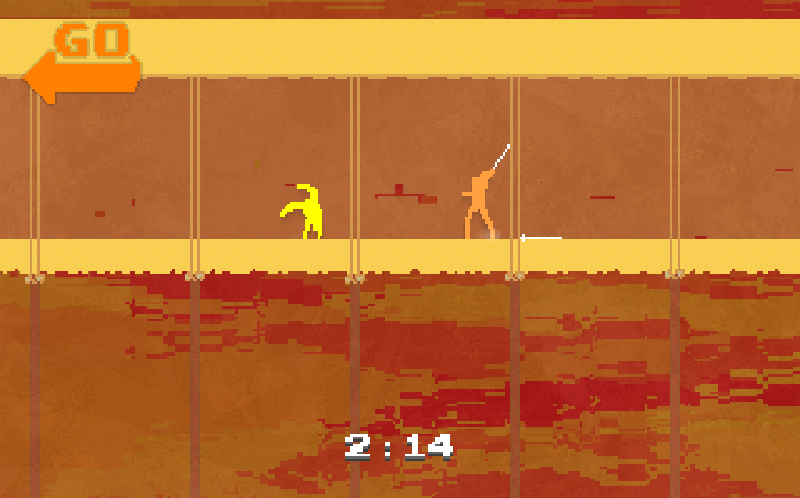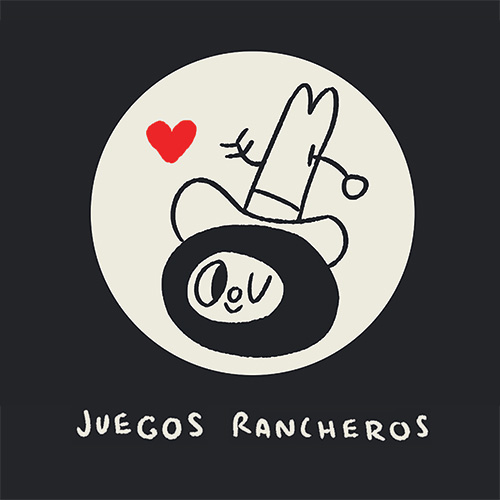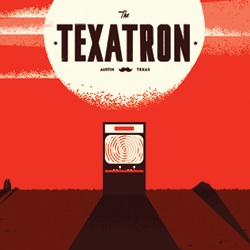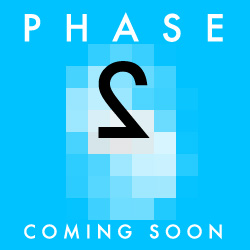THE GREAT BEAST EMERGES: A Q&A WITH NIDHOGG CREATOR MESSHOF

It’s been nearly four years since Mark Essen’s tug-of-war fencing game Nidhogg first emerged, seemingly fully grown as the perfect lo-fi brawler that none of us knew we needed until it was in our hands. Originally commissioned for the first No Quarter — NYU Game Center’s annual public-multiplayer-focused exhibition — and then known as Raging Hadron, the game was soon re-named after the Norse snake-dragon horror that ends each round and submitted to the 2011 IGF, where it took home the festival’s Nuovo award, on top of two nominations for both excellence in design & that year’s grand prize.
And then the beast slumbered… with only tiny (and, for some, maddeningly rare) further glimpses at public exhibitions put together by hyper-local indie groups Toronto’s Hand Eye Society and our own JUEGOS RANCHEROS, the game was soon cemented as one of videogames’ best spectator bloodsports for all who were lucky enough to be present, but largely avoided public gaze — until a mid-2013 appearance at fighting game mecca EVO signaled that it was finally nearly ready for public consumption.
Following quickly on the heels of & fitting beautifully in amongst Matt Thorton’s TowerFall & Teknopants’ Samurai Gunn as part of a multiplayer renaissance & still one of the most anticipated multiplayer games, Nidhogg has just been released for Windows on Steam, with Mac & possible console ports to follow in due time.
I talked with Essen about what the past four years of incubation have been like, and what people who’ve only played its earliest iterations can expect from the finished game — including two of its most major additions: online multiplayer and a robust single-player AI.
So, what’s been keeping you busy since your IGF win back in 2011?
Grad school, then part-time co-teaching Intermediate Game Design with [Waco Resurrection and The Cat and The Coup co-creator] Peter Brinson and my own class on experimental mobile games — both at USC Interactive Media & Games program — as well as contract work, side projects, and making & tweaking games for festivals and museum or gallery shows.
I have been working pretty consistently on Nidhogg all this time, it’s just that some weeks got one day a week, and others got eight days a week.
Was there ever a time over the past few years where you thought: “I should just get this out in its current state, right now?”
The goal was for the game to be taken seriously as a fighting game, so I didn’t want too many people to play it until I had everything really worked out. Showing it off at events like EVO and XOXO gave me a good idea of where the game stood, but the more serious players demand a lot.
I’ve never been a serious fighting game player — the only one I’ve really gotten into has been Marvel vs. Capcom 2, which has a very different feel than Nidhogg. MvC is all about knowing gestures and blasting up and down vertically in space until you have an opening to use them — it’s a constant fast pace.
Nidhogg is all about the slow game — getting your opponent to make the first move. There have been a few games like this, and probably even more that I haven’t played — the best example is Bushido Blade, but I find the controls pretty clunky. I’ve spent a lot of time on the “game feel” in Nidhogg.

And that game feel is way more solid [than prior publicly playable versions]. I’ve been reading a bunch on programming and fighting game structure, so now everything is a lot cleaner. That doesn’t sound like much, but really it’s huge, and a big step up for me from any other programming I’ve done.
The moveset has been tweaked a lot too — melee makes more sense, and spectators can actually follow what’s going on. There are new moves like the divekick, cartwheel, and melee finishers — divekicks are great for taking the high ground and making you less vulnerable in the air. You can grab onto ledges if you barely miss a jump — and be sweep-kicked off them if you don’t move. You can run up and kick off a wall if you’re cornered and need some distance — lots of little things like that.

At one point, the moveset was kind of exploding — I was adding things like the crane kick from Karate Kid and Yoshi’s “ground pound”. They were fun to pull off, but it was just too much to think about as a player, especially with the limited number of buttons. Some of that stuff might make sense later as another character — we want to keep adding stuff as updates after release.
The way the game was working before, there was a big web of player states and it was hard to tweak what you can do and when. Now it’s all spelled out in sparkling state machines — there are over 70 player states right now. Some of those are transitional states which you can’t control too much, like getting hit into the air after a divekick. There are also lots and lots more frames and animations.
The original build was pretty light on overt environmental obstacles, which makes the new levels quite striking when you come back to the game now, as well as little details like sword-throwing being a lot more obviously broadcasted…
Doors slow you down when you have to open them — unless you roll through — so they give a chance for your opponent to catch up. Also, the doorframes are low and will block a thrown sword. It’s a good strategy to stand just inside a door, since it provides some cover.
I like that players throw their swords often, because it’s really satisfying when you actually hit someone. It was frustrating in close combat though, as there was no warning — I’d see players realize this strategy early and just throw all the time. The added animation gives you a split second to react now. It’s also easier to explain the controls now — I don’t have to say “hold these two buttons for a magic amount of time and a sword will pop out.” If you hold up, the character cocks back the sword, which is also good for fakeouts!
Adding online multiplayer & a single-player AI was presumably also a massive undertaking…
One goal has been to try to create a platform for the eSports world to stand on, so I think stuff like online matches, leaderboards, and spectating are totally essential for an interesting evolving metagame, but it was definitely a big job!
I’ve never done any kind of networked multiplayer but I’ve always wanted to. After reading Tony Cannon’s article in Game Developer Magazine about how he structured GGPO [the full PDF of that issue is available here — ed.], I spent a lot of time setting up my code so that a the game could easily be rewound or fast forwarded. The inputs can now be flagged as authentic or predicted. Decoupling the update loop of everything that needed to be synced from the normal Game Maker update and physics system took me a little while, but it’s totally worth it.
Single-player mode has been another big thing, and it works really well now. Again, I’ve been reading up on this stuff and the ways other games have done it and have rewritten my system a few times.
My process involved watching people play a lot, writing down all the different strategies players use in different areas, and then programming the AI to do each of them. For instance, if holding the high ground on one spot is really effective, the AI could pick that strategy, if the conditions are met. It’ll keep doing that for a while if it’s working out, or it might pick a different strategy.
Each strategy has a bunch of associated jobs — the basic ‘fencing’ jobs are guard, look for an opening, attack, move back, move in, divekick, sweep kick, disarm, etc. The AI will pick a strategy and then decide which job it wants to do first.
If that job finished successfully, it’ll pick from a certain subset for the next job. If it failed or was interrupted, it’ll either pick a different job or even a different grand strategy. Different AI personalities favor certain strategies or be quicker about certain jobs so players can actually read their opponents movements and figure out how to exploit them.
The single-player is really meant as practice for the online mode, which in turn is practice for live tournaments — but there will be a set number of distinct characters to beat to “win” the game.
Do you still see this as primarily as a game that needs to be played in public, or at least in living room-type groups?
I think it works best that way, and putting players in the spotlight will often drive them towards more interesting strategies instead of doing the same move over and over. That said, unless you have the other side of it — a way for players to practice at home — then public matches are always full of novice players, and watching that gets old fast. The moves are all pretty simple, but stringing them along in a predetermined way still takes some skill.
For many fighting games, more advanced moves are hard to imagine — they either break the physics or use particles or other projectiles which appear out of thin air. That kind of stuff is just as fun to watch if you understand the possibility space, but for a newcomer it seems totally random. Watching a complex game like Starcraft can be, at least partially, enjoyed by anyone with the aid of commentary. It’s slow enough that the strategy of each player can be explained and viewers can anticipate exciting moments.
Nidhogg is pretty realistic in its moveset — you can jump pretty high, but otherwise you’re just poking at each other with swords or punching each other in the face. The level itself guides a lot of decisions. You know that the final screen is coming up in another half screen, and if the defender fails to hold the other guy off at the pass — the game is over.
Nidhogg is available now for Windows on Steam and is expected to be released to other platforms shortly. In addition, Essen is continuing work on releasing a commercial version of Flywrench, as well as commercial releases of other projects that have only seen limited release or are otherwise unannounced.
See more posts about: Mark Essen, Messhof, Nidhogg






